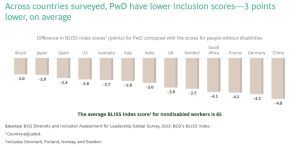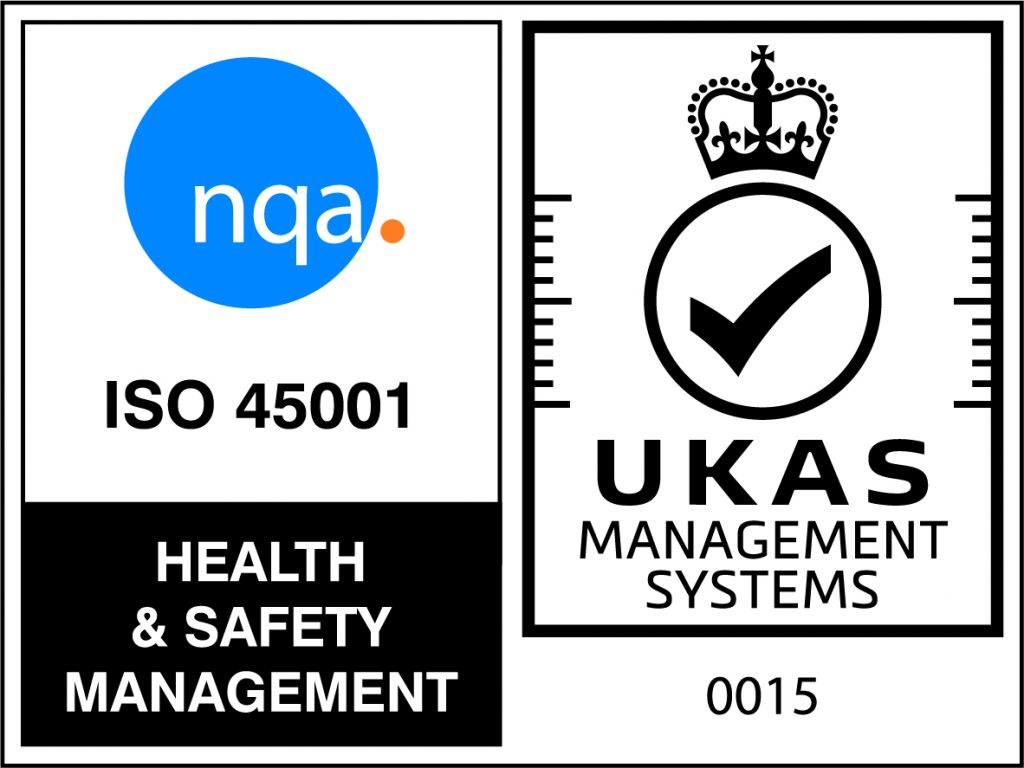Most organizations report that their workforce includes relatively few employees with disabilities: just 4% to 7% on average.1 But in BCG’s survey of nearly 28,000 employees in 16 countries, some 25% of people said they have a disability or health condition that limits a major life activity.
They are not the only ones finding a higher prevalence of disabilities among the workforce. The survey’s self-identification rate falls within the range of prevalence rates for workers with disabilities or health conditions across several countries: approximately 13% to 30%.
The disparity between the prevalence rates that employers report and the self-identification rates that employees shared with us reveals three troubling workplace realities:
- Employees with disabilities significantly underdisclose to their employers, perhaps fearing stigma or a negative impact on their job security or promotion prospects.
- Employers are missing a large-scale opportunity to enable a quarter of their workforce to bring their full selves to work.
- And employers making decisions and investments regarding their workforce are relying on inaccurate information. If management doesn’t understand the true number of people with disabilities (PwD), it’s hard to make a case for developing tailored support systems that could have significant benefits.
BCG’s BLISS Index, which measures employees’ feelings of inclusion, provides a quantitative window to understand the workplace experience of employees with disabilities today. BLISS stands for Bias-Free, Leadership, Inclusion, Safety, and Support, and the index provides a single, comprehensive score that reflects feelings of inclusion. Scores range from 1 to 100 and are based on rigorous statistical modeling.
Inclusion—which we define as feeling valued and respected; believing your perspectives matter; feeling happy, motivated, and like you belong; and feeling that your mental and physical well-being is supported—matters. Done right, inclusion positively changes the workplace experience, and not just for marginalized groups: inclusive cultures benefit all employees.
But for people with disabilities, we found a disappointing state of affairs. Unsurprisingly, PwD report lower levels of inclusion in the workplace relative to their colleagues without disabilities: the average BLISS Index score for PwD is 3 points lower than the average score for those without a disability or health condition. These findings hold true across the countries included in our research.

But the scores for PwD are also 1 to 2 points lower than those for other employee groups that are often the focus of diversity, equity, and inclusion (DEI) efforts: women, the LGBTQ community, and Black, indigenous, and other people of colour.
These findings matter because lower feelings of inclusion are correlated with higher attrition.
But, as BCG demonstrated statistically via BLISS, improving an employee’s feelings of inclusion increases the likelihood that they will stay with the organization. For example, a 5-point increase on the BLISS Index corresponds to an approximately 2.5% reduction in attrition risk. For an organization with 1,000 employees, that translates to 25 employees staying rather than leaving—and taking their expertise and institutional knowledge with them. In today’s environment of low unemployment and costly hiring and training, the economic impact on organizations can be substantial.
Beyond differences in BLISS Index scores, the survey also found that PwD are having a more negative work experience: PwD are 6 percentage points less likely than nondisabled employees to indicate they are happy at work. They are nearly 15 percentage points more likely to say that work negatively impacts their mental and physical well-being and their relationships with friends and family. And they are 1.5 times more likely to have experienced discrimination at their organization than those without a disability or health condition.
Given the disconnect between perceived prevalence and self-disclosure rates and given the worse experiences of PwD in the workplace, it’s clear that organizations need to create a more inclusive culture. Good news—the data shows that organizations can foster greater feelings of inclusion for PwD by providing:
- Employee-centric policies and programs
- Mentorship
- Reasonable accommodations
There’s another way to increase feelings of inclusion: at organizations that have put the above recommendations in place—thereby fostering a more inclusive environment—employees with disabilities can feel safe and supported in disclosing their disability, creating more opportunities to ask for what they need and to perform at their best. And doing so creates more-accurate people data, which allows employers to assess and invest appropriately and thereby maximize workplace productivity.
Article Source

 Back to News
Back to News

















